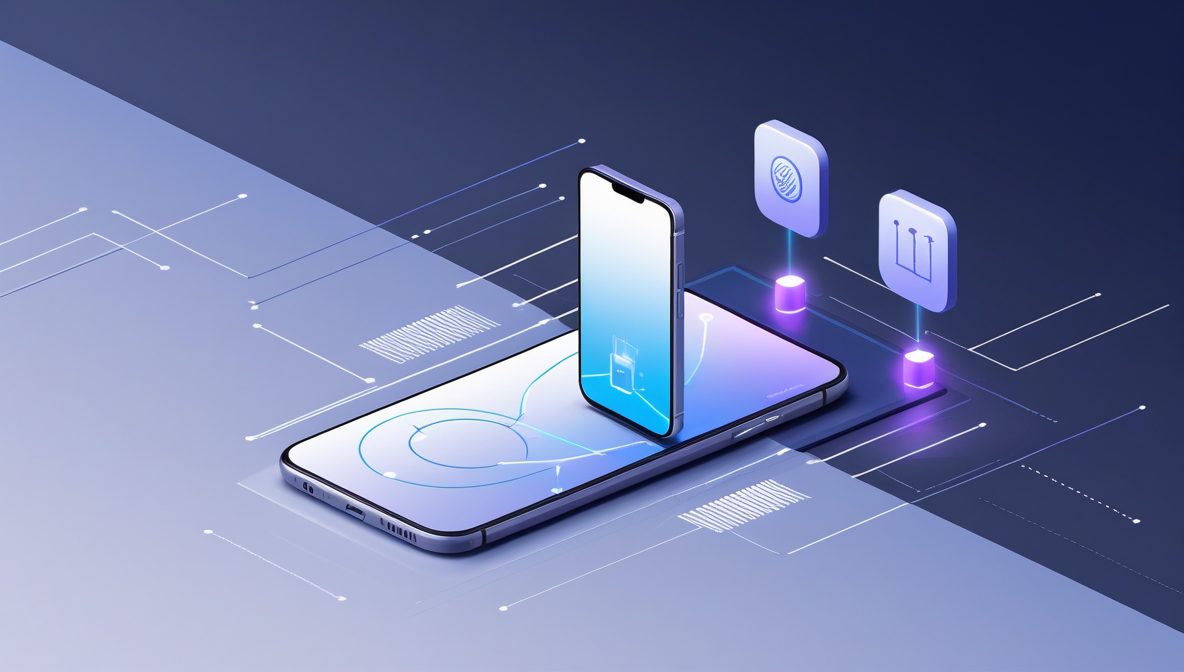The emergence of mobile and native apps has introduced a need of speedier and more dependable digital experiences. Consumers are used to and demand instantaneous loading times, continuous performance, and fluid interactions wherever they may be. Although mighty, traditional cloud infrastructure fails to meet these expectations because of the geographic scope and network overload issues That’s where edge computing for native apps enters the scene, not as a replacement for cloud but as a necessary complement that brings computing closer to end user.
Edge computing for native apps addresses critical challenges such as latency, network reliability, and bandwidth consumption by processing data at or near the source. Applications experience reduced response time and enhanced user interaction by not requiring them to transmit data long distances to central data centers. Whether it is streaming video and gaming, industrial IoT, and real-time health monitoring, the use cases are extensive and constantly growing. The article comprises the mechanism of this architecture, why it isa game changer in mobile application development, and some benefits that can be quantified.
Understanding Edge Computing for Native Apps
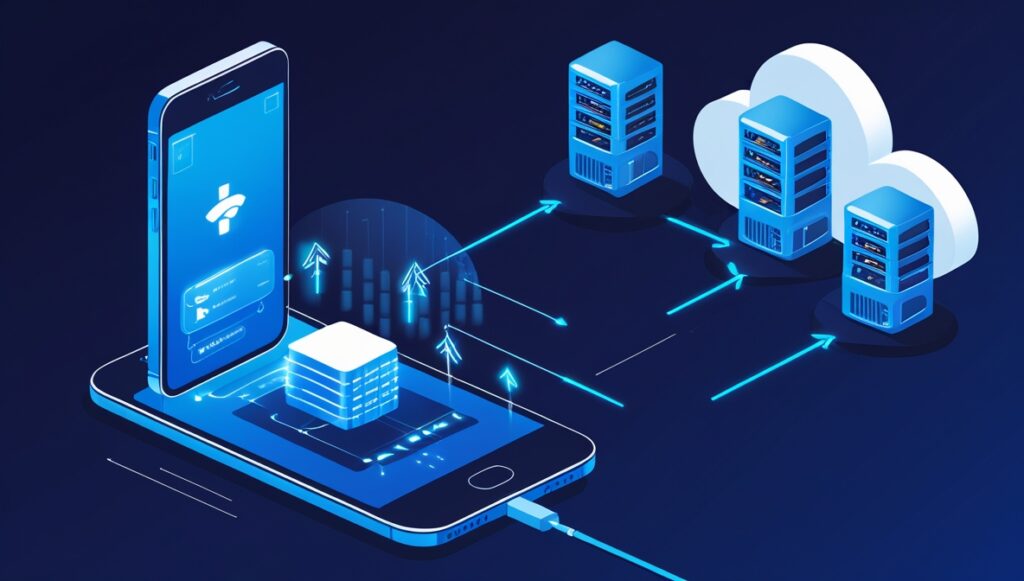
Edge computing is a model in which computation is brought nearer to the data source instead of solely depending on the centralized cloud servers. This architecture has concrete advantages in the case of native apps, that is, apps that are developed to run on mobile operating systems (such as Android or iOS). rather than directing user interactions to a cloud platform (which could be thousands of miles away), apps talk to edge servers that are placed locally, waiting time is radically decreased.
When incorporating edge computing in native apps development and deployment, developers open up new potentials. It is critical especially in time-sensitive services where a millisecond can make a difference in the user experience or the effectiveness of operations. Autonomous vehicles, smart homes, logistics, healthcare monitoring, and many others are transforming the way data is processed, interpreted, and acted on by edge-enabled apps.
What is Edge Computing With Respect to Native Applications?
Native app environment Edge computing is the concept of moving computational resources like storage and processing closer to the device, frequently on local or regional servers. The strategy is used to reduce the reliance on the remote servers, which are deployed in the centralized cloud areas and may contribute to latency issues because of the physical distance. As opposed to browser-based applications, native apps already execute on devices, and combining this with edge computing even speeds up performance further.
The model is especially efficient in use cases where real-time data is involved, e.g. live sports updates, financial trading, or location tracking. Applications communicate with edge nodes to read or write data with very low latency, enabling virtually real-time processing and decision making. This closeness also translates into less of bottlenecks caused by internet traffic and more failure points in the communication channels.
Evolution from Centralized Cloud to Edge Infrastructure
Early internet days had centralized data centers that served practically all digital services. Although cloud computing was effective in scaling applications, it created latency and bandwidth problems because it relied on core facilities. This model started to creak as millions of users started to depend on mobile apps to perform essential tasks.
Edge computing is an answer to this shortcoming. It lowers the response time required to process the requests by distributing the processing ability to various regional locations. The deployment of 5G networks has expedited this process, as 5G networks are high-speed networks that are also by design edge-computing compatible. This paradigm allows native applications to provide superior performance that is also responsive and elastic.
How Native Apps Benefit from Proximity-Based Processing
Native apps can be used to implement such functions as video rendering, location tracking, biometric authentication, real-time communication. These are tasks which have short response time requirements and location close to processing infrastructure is important. Data no longer needs to traverse thousands of miles with the edge servers running in the metro areas or even on the local network nodes.
Edge nodes allow game applications to process input more quickly, as well as synchronize data without perceptible latency. Equally, in smart city usage cases, native apps that control traffic lights or environmental sensors could provide real-time feedback that would otherwise be unattainable due to the conventional cloud latency.
Speed Enhancement through Edge Computing
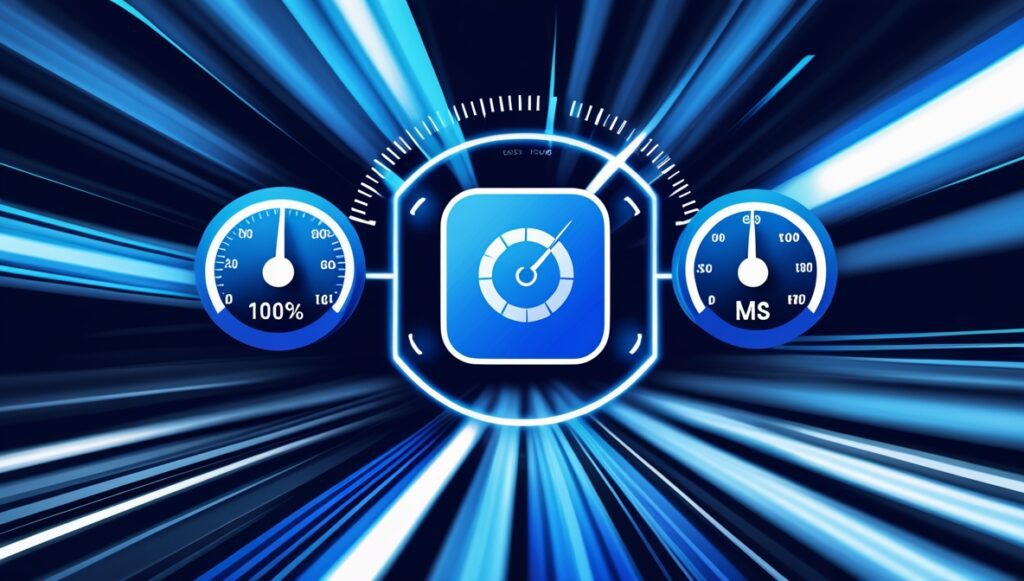
Among the most notable advantages of edge computing and native apps integration, increasing speed should be mentioned. Mobile users are known to be very impatient- they can be scared away by a delay of three seconds in the loading process. Edge computing is responding to these needs by making sure data is computed and served locally, usually in milliseconds.
Native apps can carry out tasks faster with less dependency on far-off servers. This results in improved experience and user retention. Edge servers also can take some of the load off of mobile devices, such as intensive tasks such as video transcoding or AI inference.
Reduction in Data Transmission Delays
Conventional architectures are characterised by device-data centre back and forth communications. This adds latency, particularly in geographically dispersed user populations. With computation at the edge, apps also remove redundant hops thus accelerating the overall process.
This becomes especially effective in time-sensitive applications such as emergency recall or stock market notifications where data must be communicated and responded to in moments. The research conducted by Intel showed that edge computing is capable of reducing latency by up to 75 percent, which is good in mobile environments where every millisecond matters (Intel).
Improving App Responsiveness for Real-Time Use Cases
Applications that are used in real time – such as ride-hailing, fitness-tracking or augmented reality tools – depend on instant data feedback. Slow rendering or response can be disruptive and make it less reliable. These apps provide virtually instant interactions, since edge servers handle the inputs near the user.
It is also beneficial to the retail firms that operate in-store apps to help customers do their digital shopping. Local processing of barcodes, payments, and user queries reduces the transaction time and makes them more certain. This eradicates the chances of downtime in case of bad network connection or server latency.
Load Balancing and Network Optimizactivity
Edge computing helps in the distribution of workloads among multiple local nodes instead of routing all traffic to a central server. This inherently balances the load and provides less stress on an individual system. It also assists in the optimization of network bandwidth through filtering or source compression of data.
One of the examples of this model is Content Delivery Networks (CDNs). They make duplicates of content on edge nodes throughout the globe, which makes it accessible to the users quicker no matter where they are (Cloudflare). Native apps that utilize such system for media or static asset improvement consistencies and speed are enhanced.
Latency Reduction and User Experience Improvement
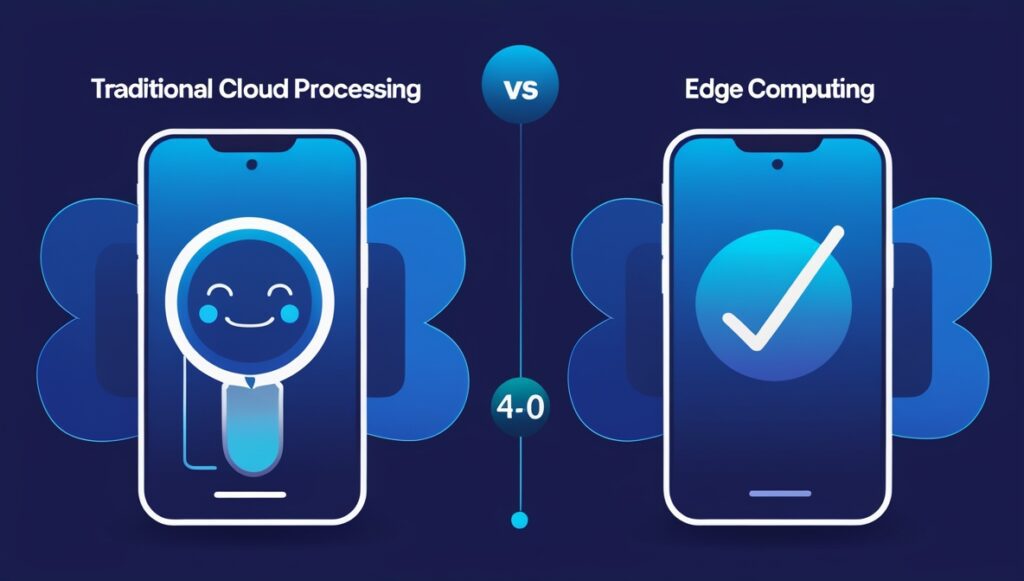
Latency is directly related to user experience. The less time passes between the moment of user interaction and the moment when an app reacts, the more intuitive the interaction seems. The principle of proximity in Edge computing ensures a significant decrease in the time of movement of data, which makes work processes much smoother and allows continuous use.
Native apps minimize jitter, lag, and packet loss by moving computation closer to the user, particularly in unreliable internet environments. This provides a more reliable basis of services that must be available 100 percent of the time and respond quickly, as is needed in industries such as healthcare and logistics.
Minimizing Round-Trip Time for User Requests
Round-trip time (RTT) Round-trip time (the time it takes a request to travel device to server and back) is a large contributor to perceived app speed. Buffering, lag in updating UI and slow interactions are caused by high RTT. This time is extraordinarily reduced by edge servers deployed in telecom networks or in data centers located in cities.
The model has been particularly valuable in financial applications in which users would require viewing changes in the stock prices or balances in real-time. It also improves voice assistants, minimizing the delay between the voice prompt and the reaction of the system, making dialogues more natural.
Leveraging Local Servers for Instant Processing
Native apps are efficient when standard tasks, such as authentication, preference loading, or local analytics are performed at the edge. They can be offloaded of the app or device and can be performed instead on local infrastructure with minimal latency.
Not only does this release the resource of the device but it also lowers power consumption. On the example of smart home ecosystems, voice commands can be processed locally, avoiding transferring data to the cloud, which enhances speed and privacy.
Role of Edge AI and Analytics in Boosting Performance
Edge computing does not just end at simple data processing. It now works with artificial intelligence to provide real-time analytics and edges computing decisions. This enables apps to be responsive and customize experiences without having to wait on backend processing.
Edge AI runs on retail apps that recommend items or track in-store progress, as an illustration. These applications process customer information locally, in real time. The same can be said about manufacturing apps that execute predictive maintenance models that are developed at the factory floor level thus avoiding delays that may be costly in terms of money or life.
Real-World Applications and Industry Adoption
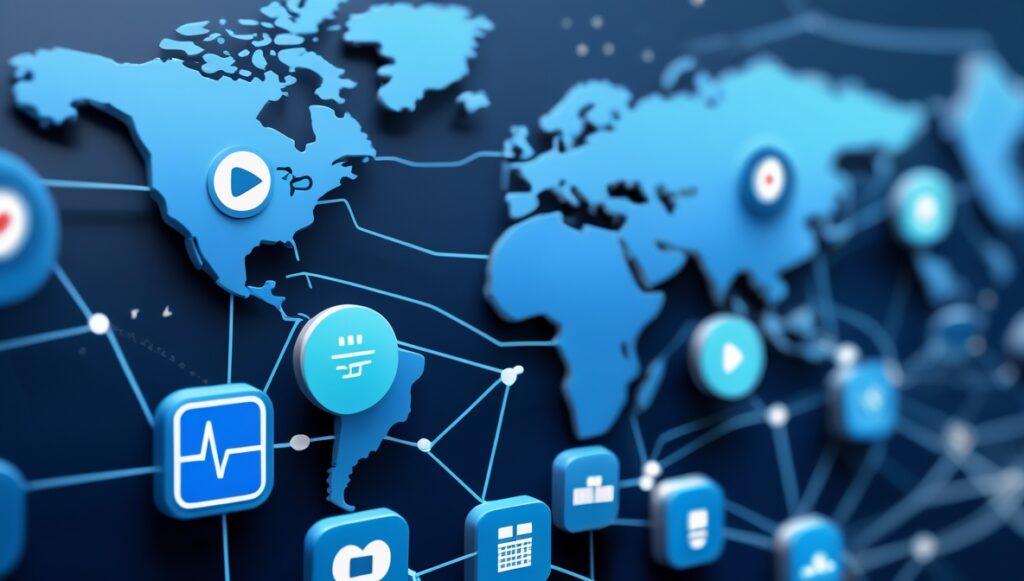
Edge computing for native apps is not a theoretical concept — it’s actively reshaping how businesses operate across sectors. Entertainment and healthcare, logistics and manufacturing companies are also applying this model to respond to the contemporary requirements of swiftness, safety, and survivability. The increased use of native apps in the workflow and consumer interaction has made it a strategic step to incorporate edge computing into their design.
Infrastructure enhancements, namely, the expansion of 5G and multi-access edge computing (MEC) also follow this trend. The telecom companies have introduced edge services, which are directly interconnected into the mobile networks making it easier for developers to access the local servers. Such a convergence can be more scalable and performance can be delivered as per requirement.
Edge in Gaming and Augmented Reality
Gaming applications require low latency and large throughput. Any action, movement, shot or tactic, has to be identified on the spot to keep the experience equal and exciting. Edge computing addresses this need by availing local processing capabilities, which significantly decreases latency and improves frame stability.
The retail, navigation, or entertainment applications based on augmented reality (AR) are also the applications that demand fast data processing. These applications superimpose digital information on the physical world and they need to be absolutely in synch with the surroundings. Local edge servers make this update in real-time possible, which can support a smoother transition and an increase in interactivity (NVIDIA).
Health and Industrial IoT Case Studies
Native apps are utilized by healthcare providers to check patient vitals, electronic health records, and diagnostic tools. Any delay in the case of emergencies or surgery may affect the patient care. Edge computing would allow interpreting data locally, which would decrease its time-to-decision and enhance results.
native apps in the industrial sector are found on factory floors to operate machines, measure temperatures, or examine supply chains. These apps can run functions area by connecting to edge nodes, which decreases latency and improves safety. General Electric and Siemens have implemented edge platforms to optimise manufacturing efficiency and predictive maintenance (GE Digital).
Content Delivery and Media Streaming Scenarios
Edge computing has been implemented by streaming services to minimize the amount of buffering and the time it takes to load video. Services such as Netflix and YouTube have moved caches nearer to the users, which acts as edge servers storing popular content. Such an approach guarantees that people will be able to stream video in high definition without any stuttering during peak traffic times.
With native apps used to deliver news, music, or podcasts, edge caching makes sure that they are updated on time and that less bandwidth is consumed. It is also beneficial in peak traffic or service failures scenarios since users would be able to retrieve important information in their closest edge node without the necessity of reestablishing a connection with the central cloud.
Conclusion
Edge computing for native apps is not just a technical upgrade; it’s a transformation in how applications are built and delivered. It overcomes the fundamental issues of speed, latency, and reliability that have traditionally stymied mobile experiences by moving computation closer to the user. What this means to users is reduced load times, interactive experiences, and more reliable apps, even when the network is poor. The advantages are being felt cross-industrially, whether in real-time gaming and immersive augmented reality, life-saving healthcare applications, and quick media streaming. It enables developers to build smarter, more efficient apps with instant response time and that are more resilient.
As network infrastructure evolves and edge-based services become more supported, edge computing is starting to become not only beneficial but a requirement in native app strategies a redefinition of performance that begins at the ground level. Organizations looking to stay competitive should consider the long-term value of deploying native apps on edge-powered platforms. It’s an approach that not only meets current user expectations but is also future-ready, supporting innovations like IoT, AI, and real-time analytics at scale. The intersection of edge computing and native app development represents one of the most promising evolutions in mobile technology today — one that reshapes performance from the ground up.

